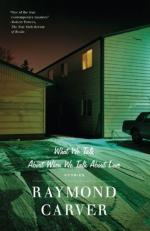|
This section contains 287 words (approx. 1 page at 400 words per page) |

|
1960s-1970s: The dominant trend in fiction is in the style of experimental, "postmodern" writing. The American short story is considered to be at a low point.
1990s: Carver's turn to "neo-realist" subject-matter, written in a "minimalist" style, which goes against the grain of postmodern fiction, is credited with both revitalizing the genre of the American short story, and inspiring a generation of writer's attempting to imitate his minimalist style. Because of the large number of Carver imitators, however, a backlash against minimalist writing soon follows. Carver's entire oeuvre is now seen in a broader perspective, and Carver is indisputably recognized as the foremost American short fiction writer of his generation.
1960s-1970s: While Carver's story, published in 1982, focuses on the theme of domestic violence, the term itself is not mentioned. The battered women's movement, which begins in the early-to-mid-1970s, grows out of...
|
This section contains 287 words (approx. 1 page at 400 words per page) |

|




